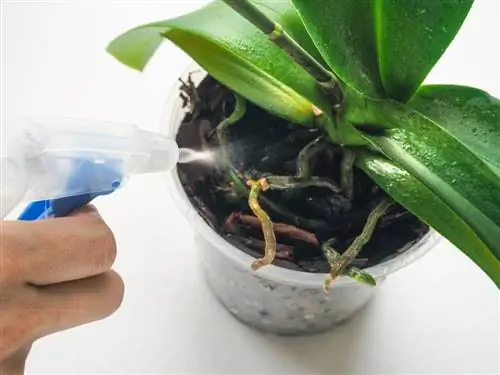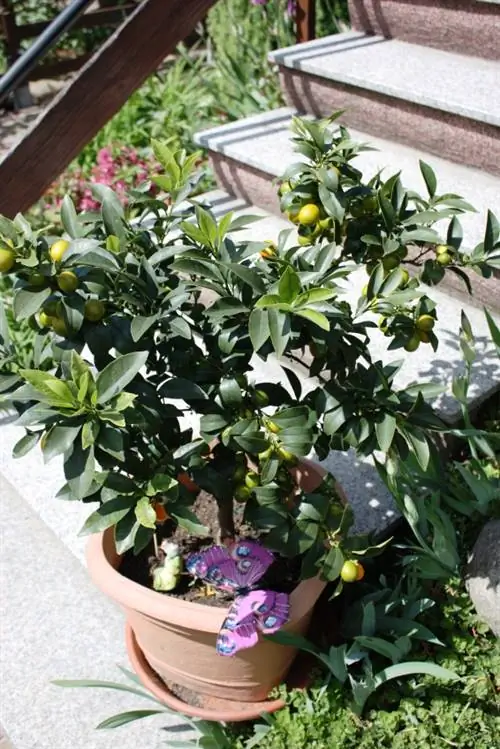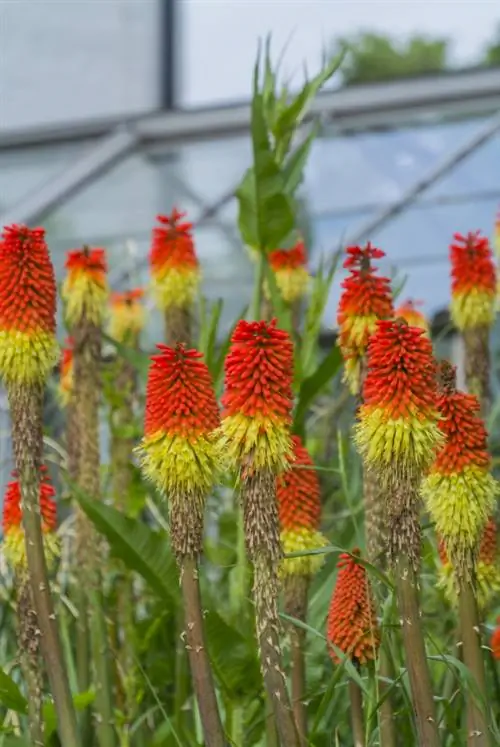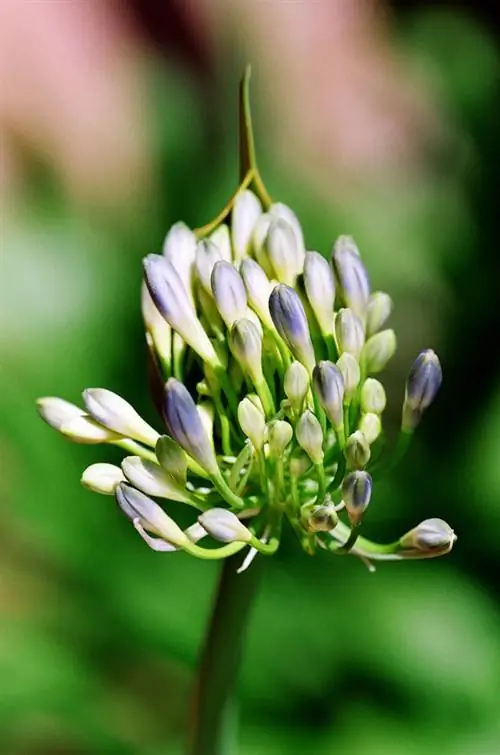- Author admin [email protected].
- Public 2023-12-16 16:46.
- Last modified 2025-01-23 11:22.
The butterfly orchid (bot. Phalaenopsis) is now one of the most popular exotic houseplants in German households. No other orchid can be found there so often. As a rule, it delights the owner with its blooms for many weeks.

Why isn't my Phalaenopsis orchid blooming?
If a Phalaenopsis orchid does not bloom, this may be due to natural dormancy, unfavorable location, diseases or pests. The plant should rest for a few weeks, receive less water and night temperatures should be reduced to 14-16°C.
Why isn't my phalaenopsis blooming?
After about four months of flowering, the last flowers of the Phalaenopsis wilt and fall off. The fact that it doesn't bloom for a few weeks or months is completely normal and absolutely nothing to worry about, even if the rest period is getting shorter and shorter with the new hybrid varieties. Sometimes an unfavorable location, for example with cool drafts, is also responsible for the lack of flowering.
Be sure to let your Phalaenopsis enjoy a few weeks of rest after flowering. As long as the plant appears he althy and the leaves look green and fleshy, everything is fine. Otherwise, you should check your orchid for diseases and pest infestations. Both can prevent re-blooming.
Does my Phalaenopsis need special care?
Adapt the care after flowering to the changed situation, your Phalaenopsis now needs less water and no fertilizer for the time being. But make sure that the leaves do not hang limply. If this happens, then you probably didn't water the plant enough.
Can I encourage my Phalaenopsis to bloom?
Without the required rest period, your Phalaenopsis is unlikely to bloom again. That's why the first thing you need is your patience. However, if the flowers don't bloom for too long, you can encourage the orchid to produce flowers again by lowering the night temperatures. For a period of five to six weeks, reduce the temperature to around 14°C to 16°C at night.
The most important things in brief:
- longer flowering break is normal (several weeks to months)
- do not fertilize during the rest phase and only water sparingly
- Reduce the temperature slightly
- be sure to give yourself some rest, at least 4 to 5 weeks
- Don’t change locations unnecessarily
Tip
If your Phalaenopsis does not want to bloom for a very long time, then diseases and pests could be behind it, but also an unfavorable location or care errors.






